There’s something utterly comforting about the melded flavors and tender meat in this Slow Cooker Korean Beef Noodles Recipe. It’s one of those meals that fills your kitchen with irresistible aromas and delivers a satisfying, hearty dish without demanding hours of hands-on cooking.
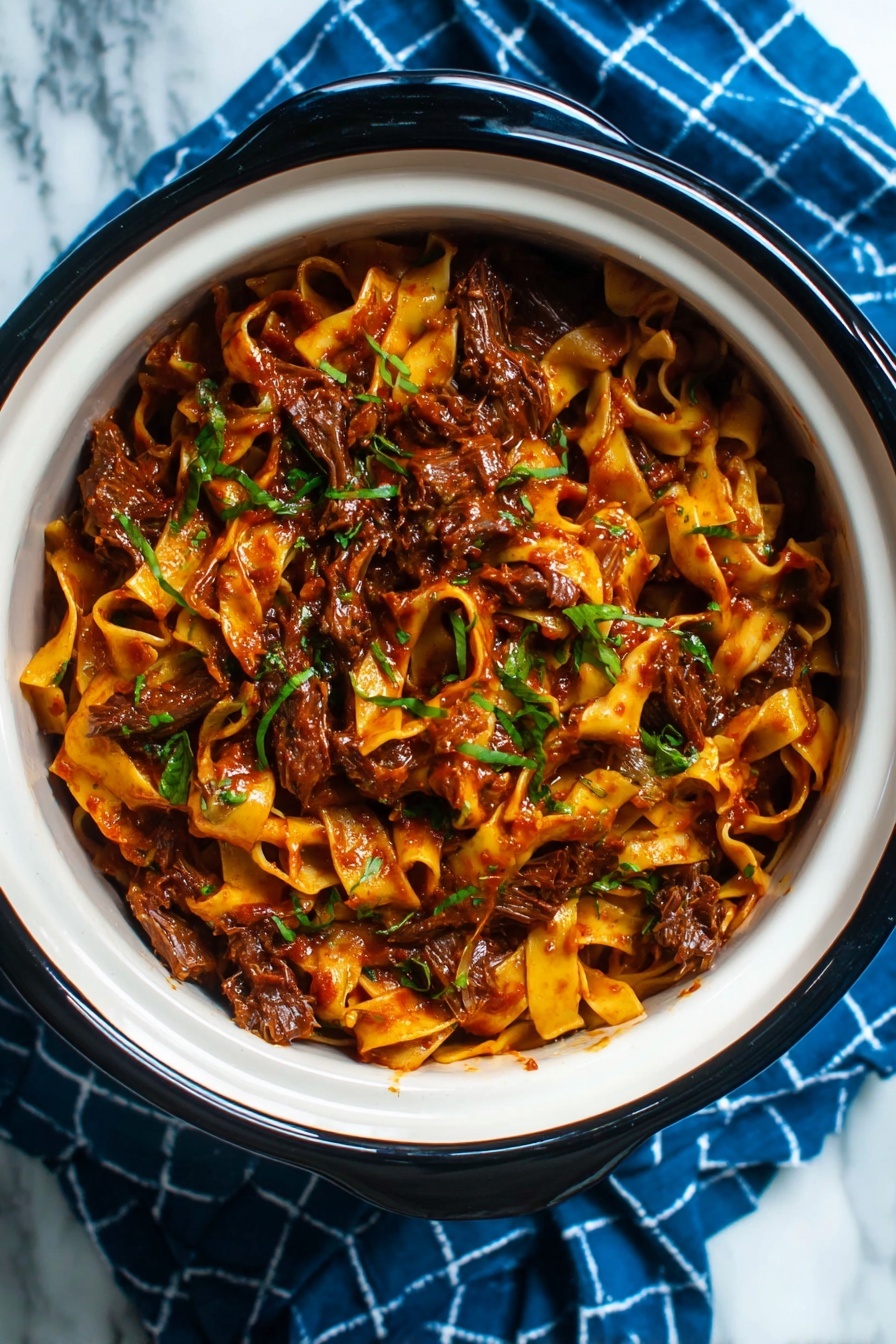
Jump to:
Why You'll Love This Recipe
I absolutely adore this Slow Cooker Korean Beef Noodles Recipe because it effortlessly combines rich, savory beef with bold Korean flavors and chewy udon noodles. It’s a slow cooker dream that transforms humble ingredients into something special.
- Hands-off cooking: You set it and forget it all day, then enjoy a delicious, tender meal that feels like it took hours of fuss.
- Deep, layered flavors: The gochujang, soy, and garlic-ginger paste create a rich sauce that perfectly coats every bite.
- Perfect texture contrast: Succulent shredded beef paired with soft but hearty udon noodles is pure comfort food.
- Flexible ingredients: You can swap the beef cuts or noodle types easily without losing the magic of this dish.
Ingredients & Why They Work
Every ingredient in this Slow Cooker Korean Beef Noodles Recipe plays a role in building that signature balance of spicy, savory, tangy, and sweet. Shopping tip: look for fresh garlic-ginger paste in the refrigerated section; it really brightens the sauce without extra chopping.
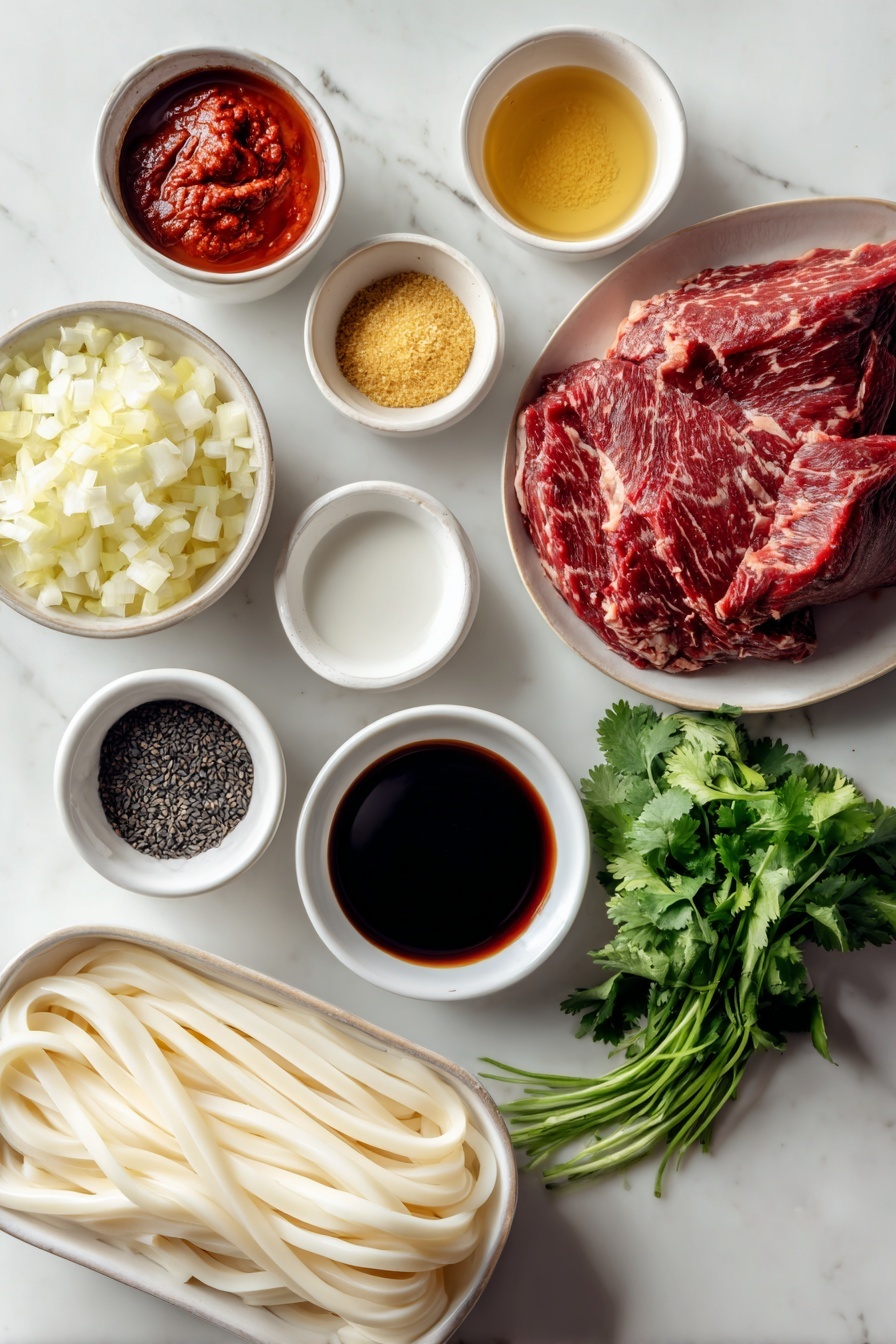
- Onion: Adds natural sweetness and softens as it cooks, enriching the sauce.
- Gochujang: This Korean chili paste brings a mild heat with a fermented depth that’s essential here.
- Dark soy sauce: Provides a salty umami backbone and deep color.
- Rice vinegar: Balances the richness with a sharp tang that lifts the flavors.
- Light brown sugar: Adds sweetness and caramel notes to meld the sauce together.
- Garlic ginger paste: Fresh and aromatic, it’s like the flavor powerhouse for this beef.
- Tomato paste: Surprising but brilliant — it enriches the sauce with subtle acidity and body.
- Low-sodium beef stock: Keeps the sauce rich and flavorful without overpowering saltiness.
- Ox cheek (or substitute): This cut becomes melt-in-your-mouth tender, perfect for slow cooking.
- Udon noodles: Thick, chewy, and easy to heat through at the end, soaking up all that lovely sauce.
- Fresh coriander: Adds a fresh, herbal brightness at the end to cut through richness.
- Black sesame seeds: Nutty garnish that gives a subtle crunch and visual appeal.
- Kosher salt & black pepper: Season carefully at the end to suit your taste.
Make It Your Way
I love mixing up this Slow Cooker Korean Beef Noodles Recipe depending on what’s in season or my mood. Don’t hesitate to make it your own — it’s forgiving and versatile, after all.
- Variation: Try swapping ox cheek for short ribs if you want a fattier, richer beef flavor — it still comes out tender and delicious every time I’ve tried.
Step-by-Step: How I Make Slow Cooker Korean Beef Noodles Recipe
Step 1: Build the Flavor Base
First, add the finely diced onion, gochujang, dark soy sauce, rice vinegar, light brown sugar, garlic-ginger paste, tomato paste, and beef stock right into the slow cooker. Stir everything well to combine those intense, layered flavors. This step is the secret for that rich sauce you’ll love later.
Step 2: Add the Beef and Slow Cook
Place your ox cheek (or preferred cut) on top of the sauce, turning it to coat all sides generously. Pop the lid on and set the slow cooker to low for 8 hours. This long, slow cooking transforms tough cuts into buttery-soft beef that falls apart with a fork.
Step 3: Shred and Add Noodles
After the slow cooker does its magic, shred the beef right inside using two forks. Stir the meat back into the sauce so every bite gets that perfect saucy coating. Add the udon noodles and chopped fresh coriander, then cook on high for about 25 more minutes to heat through and soften the noodles just right.
Step 4: Season and Garnish to Serve
Finally, taste and season with kosher salt and freshly cracked black pepper to your liking. Sprinkle on black sesame seeds for a little texture and that classic nutty flavor. Serve warm, and watch everyone dive in.
Top Tip
From my experience, slow cooker recipes shine when you layer flavors early and trust the low-and-slow process. Here are a few tips I rely on when making this Slow Cooker Korean Beef Noodles Recipe so yours turns out luscious every time.
- Use quality gochujang: The depth of heat and umami depends on this paste, so pick a good brand for the best results.
- Don’t skip the tomato paste: It adds a subtle tang and thickness to the sauce that balances the sweetness and spice.
- Shred the beef while warm: It’s easier to shred right out of the slow cooker, and the sauce soaks in better.
- Timing the noodles: Add the udon noodles at the end to prevent them from getting mushy and to soak up just enough sauce.
How to Serve Slow Cooker Korean Beef Noodles Recipe
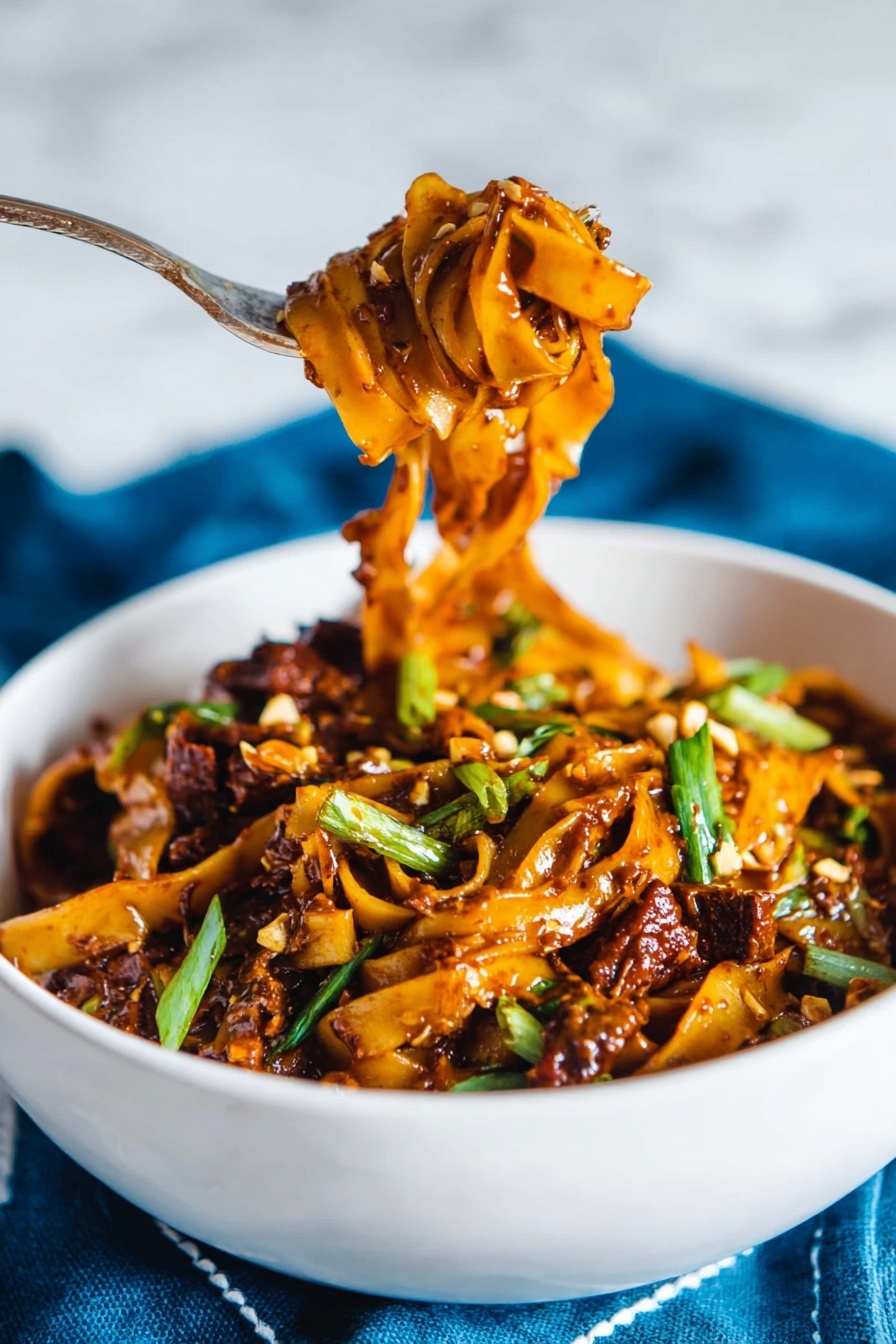
Garnishes
I always sprinkle on fresh chopped coriander and black sesame seeds — the coriander adds a bright herbal note, while those little sesame seeds offer an extra nutty crunch that’s addictive.
Side Dishes
I like to serve this with simple steamed veggies like broccoli or bok choy and a crisp cucumber salad on the side to refresh your palate between rich mouthfuls.
Creative Ways to Present
For a special occasion, I’ve plated this in shallow bowls with extra fresh herbs, thinly sliced radishes, and a drizzle of toasted sesame oil on top. It elevates the dish and impresses guests without extra fuss.
Make Ahead and Storage
Storing Leftovers
I love making this recipe ahead; leftovers stay amazing for up to 3 days in an airtight container in the fridge. I always keep the beef and noodles together so the noodles absorb even more flavor overnight.
Freezing
This is freezer-friendly too! Just leave out the noodles when freezing, so they don’t get mushy. Freeze the shredded beef and sauce in a sealed container and add fresh noodles when reheating.
Reheating
Reheat gently on the stove with a splash of beef stock or water to loosen the sauce. If you froze the beef separately, cook fresh udon noodles and combine everything just before serving – it tastes just like day one!
Frequently Asked Questions:
Absolutely! While ox cheek is amazing for its tenderness, short ribs, chuck roast, or even oxtail work really well too. Just adjust cooking times if needed, but all slow cook into a rich, shreddable texture.
Add the udon noodles during the last 25 minutes of cooking on high, so they warm through but don’t overcook. If you leave noodles in too long, they can get too soft and lose their chewy texture.
To make this gluten-free, choose gluten-free soy sauce and udon-style noodles made from rice or other gluten-free grains. The rest of the ingredients are naturally gluten-free.
This dish has a mild to moderate heat level thanks to the gochujang, which is more about savory depth than intense spice. You can adjust the quantity or add chili flakes if you like it hotter.
Final Thoughts
This Slow Cooker Korean Beef Noodles Recipe has become my go-to when I want a cozy, impressive meal without standing over the stove all day. I promise you’ll enjoy the tender meat, comforting noodles, and the beautiful balance of flavors—it’s like a warm hug on a plate. Give it a try and make it your own; I’m sure it’ll become a favorite in your kitchen too!
Print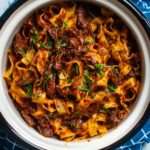
Slow Cooker Korean Beef Noodles Recipe
- Prep Time: 15 minutes
- Cook Time: 8 hours 25 minutes
- Total Time: 8 hours 40 minutes
- Yield: 4 servings
- Category: Main Course
- Method: Slow Cooking
- Cuisine: Korean
Description
This Slow Cooker Korean Beef Noodles recipe combines tender, slow-cooked ox cheek with flavorful Korean sauces and fresh udon noodles, creating a comforting and savory dish perfect for a satisfying dinner.
Ingredients
Beef and Sauce
- 1 large onion, finely diced
- 2 tablespoons gochujang
- 2 tablespoons dark soy sauce
- 2 tablespoons rice vinegar
- 1 tablespoon packed light brown sugar
- 1 tablespoon garlic ginger paste
- 1 tablespoon tomato paste
- 3 ½ ounces low-sodium beef stock
- 14 ounces ox cheek (can substitute ox tail, short ribs, or chuck roast)
Noodles and Garnish
- 4 pouches ready-to-use udon noodles
- 1 to 2 tablespoons roughly chopped fresh coriander
- 1 tablespoon black sesame seeds, for garnish
- Kosher salt and freshly cracked black pepper, to taste
Instructions
- Prepare the sauce: In the slow cooker, combine the finely diced onion, gochujang, dark soy sauce, rice vinegar, light brown sugar, garlic-ginger paste, tomato paste, and low-sodium beef stock. Stir well to blend all the ingredients into a uniform sauce mixture.
- Add the beef: Place the ox cheek on top of the sauce mixture in the slow cooker, ensuring it is coated on all sides with the sauce surrounding it. Cover the slow cooker with the lid.
- Slow cook the beef: Cook the beef on low for 8 hours, allowing the meat to become tender and infused with the flavors of the sauce.
- Shred the beef: After cooking, carefully shred the beef using forks and return the shredded meat to the slow cooker, mixing it into the sauce.
- Add noodles and coriander: Stir in the ready-to-use udon noodles and chopped fresh coriander. Increase the heat to high and cook for an additional 25 minutes, allowing the noodles to warm through and absorb some sauce flavor.
- Season and garnish: Season the dish with kosher salt and freshly cracked black pepper to taste. Garnish with black sesame seeds before serving.
- Serve and enjoy: Dish out the Korean beef noodles hot and enjoy a flavorful, comforting meal.
Notes
- Substitute ox cheek with ox tail, short ribs, or chuck roast if preferred or not available.
- Ensure the udon noodles are ready-to-use for easy addition; fresh or frozen noodles can be used but may require adjustment in cooking time.
- Adjust the spiciness by varying the amount of gochujang according to your heat preference.
- Adding fresh coriander just before the final cooking step preserves its vibrant flavor.
- For a thicker sauce, remove the lid during the last 25 minutes to reduce liquid slightly.
Nutrition
- Serving Size: 1 serving
- Calories: 480 kcal
- Sugar: 6 g
- Sodium: 700 mg
- Fat: 12 g
- Saturated Fat: 4 g
- Unsaturated Fat: 6 g
- Trans Fat: 0 g
- Carbohydrates: 50 g
- Fiber: 4 g
- Protein: 38 g
- Cholesterol: 90 mg


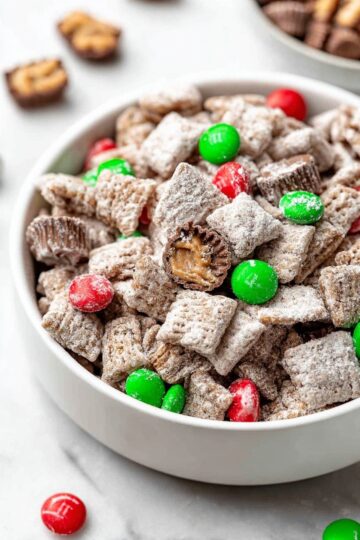

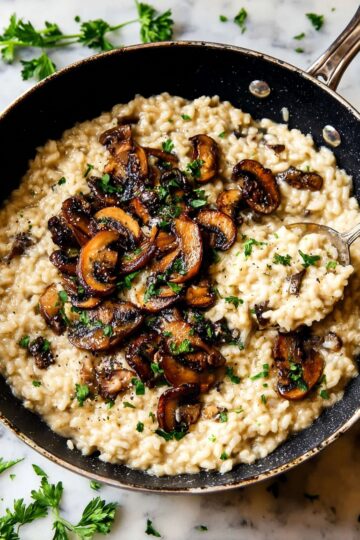

Leave a Reply